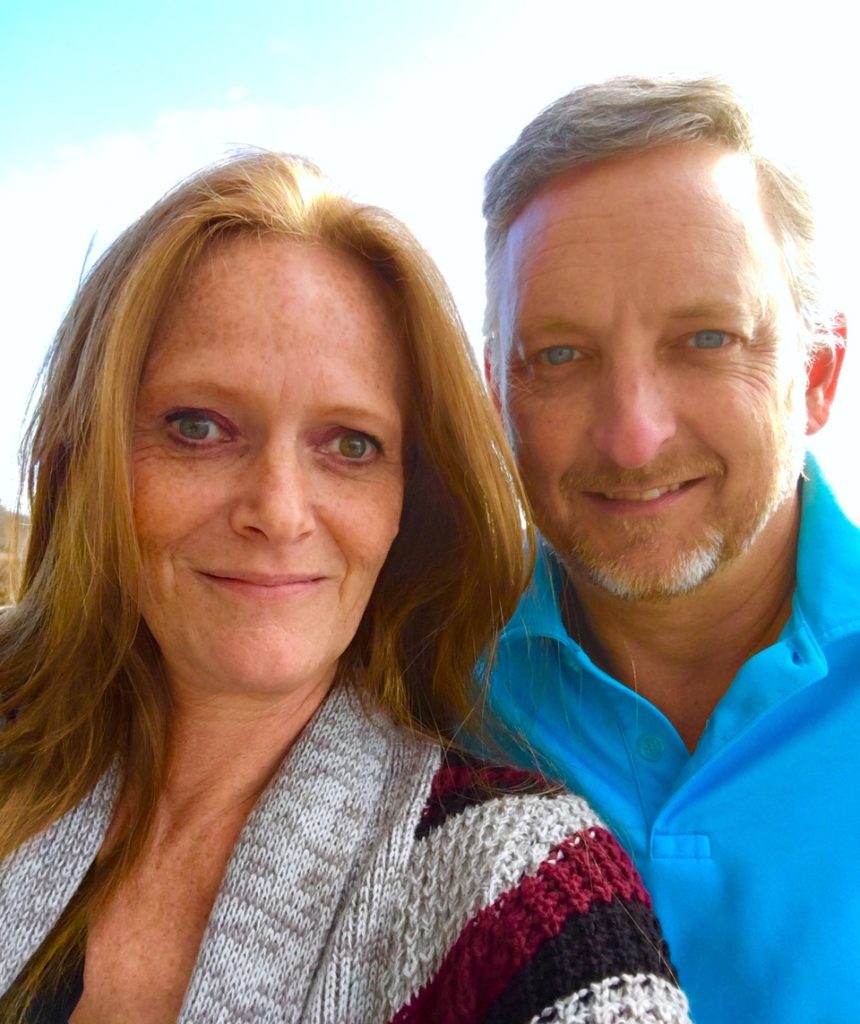
Choose Your Language:
Posted by: The Sumaira Foundation in NMO, ON, Patient, TM, Voices of NMO

From before and since that time, she has been diagnosed with a number of other conditions. She has been knocked down, again and again, and has always picked herself back up. She is one strong woman. As a mother and grandmother, Julie knows that if she dwells on being sick, she will feel sick. She knows that attitude can change everything. And despite having a healthy twin sister, she chooses now to count her blessings and carry on with life as best she can.
In the fall of 2005, part of Julie’s intestine became suddenly paralyzed. She was sent to the hospital for five days, during which a GI tube was snaked through her body. During that treatment, she was given morphine, and the doctors thought she had an allergic reaction to it. Instead, it turned out to be shingles, which affected the nerves from her shoulder down to her wrist. She had no rash.
About a year later, Julie woke up ready to head to a brand new job. She noticed that everything she saw through her left eye seemed to be in a snow globe. Still, it was to be her first day, and so she went to work. That night, she went to a doctor, who thought she had an optical migraine, though her only headache that night came after he gave her some medication.
The next day, Julie’s vision was worse, and she went to an ophthalmologist. He told her she needed to get an MRI and see a neurologist asap, to get steroids and a lumbar puncture. But the neurologist didn’t want to see her until he could see the results of the MRI, and due to the hospital schedule, Julie had to wait a month before getting the imaging, though she called every day. More than four weeks later, Julie finally saw the neurologist. She blames that time lapse for the permanent blindness in her left eye. She also had the terrible luck of having all of this start at the same time she had just changed jobs – – so she had no insurance, and had to quit the new job to take care of her health. She filed for federal disability insurance then. It took three years before it came through.
Julie was told she had Multiple Sclerosis in October 2006. In November, Julie recognized the pain she was now experiencing in her right eye. She had felt this before. This time, she got steroids right away, and a more-timely MRI. The imaging showed no brain involvement.
It was late 2006, but even then, when Julie googled “bilateral optic neuritis”, the first thing that popped up was “Devic’s Disease” (another name for NMO.) She printed the page and brought it to her next neurology appointment. She showed the doctor the description, and said, “Tell me why I don’t have this.” He responded that he’d been dealing with MS for 20 years, and he knew what he was doing.
A few months later, the bottom of her left foot felt numb. Julie lived in Minnesota, and figured this was par for the course in that climate. But then she lost her balance, and a few days later, she was sent to the Mayo Clinic with little feeling in her left leg and none in her right. She arrived before the results of the NMO test did.
Julie went in to the Mayo clinic emergency room and told the doctor that she thought she had NMO. But the doctor there didn’t see enough in her tests and symptoms, and said it was all in her head, though she was admitted to the hospital because of the problems in her legs. Two days later, after she had been tested, and her spine showed inflammation from T1 – T7, the doctor apologized. Meanwhile, they had immediately put Julie on intravenous steroids, and gave her another NMO test. At first, her diagnosis was multifold – Transverse Myelitis, ADEM, Brown-Sequard Syndrome and others.
Then that first NMO test came back positive (the second, taken while on Solumedrol, was negative.) The NMO test itself had been developed at the Mayo Clinic. When Dr. Claudia Lucchinetti heard that an NMO patient had been brought into her clinic, she flew back home to meet her. Julie credits Dr. Lucchinetti with saving her life. She stayed in the hospital for a week until Julie insisted on being released to see her nephew play in a marching band at Disney World. When she returned to Minnesota, she was put on 7 days of plasmapheresis – every other day for two weeks. After the third infusion, Julie developed a blood clot and had to be put on blood thinners, but they completed the session.
She was then put on Imuran. It took a few months, plus regular occupational and physical therapy before Julie could walk again. Julie was on Imuran for seven years, and only once made it longer than nine months without having a relapse, but her liver couldn’t tolerate a higher dose of the drug.
In 2012, Julie’s left leg swelled up like a balloon, and she was sent to the ICU, where she was additionally diagnosed with May-Thurner Syndrome and given a permanent stent.
In 2015, Julie switched therapies to Rituximab and has only experienced one mild relapse since then.
Julie recalls that back when she was diagnosed in 2006, nobody had ever heard of NMO. She took it upon herself to find out everything she could – mostly on line. The very little Julie found there was terrifying. Back then, there was no Guthy-Jackson or Sumaira Foundation. There were no NMO Facebook pages. However, she did find one Google group that another NMO patient had started. Julie gives a grateful shout out to Grace Mitchell for the love, comfort and information she so generously shared back when she was the on-line expert on NMO. With Grace’s support, Julie kept doing her own research, and became her own advocate.
Julie is not only her own advocate. She left a strained marriage, made impossible due to NMO, and later found an ideal mate. Julie’s second husband was injured in the Navy and suffers from PTSD. Together, they are grateful for what they have, and do not let their handicaps define their lives. They are working on a plan to move to Florida, where they intend to open a dive shop specifically for the disabled. They know that swimming in and diving under water can give people the sense of their bodies back, and that experiencing the magic of the underwater world can be transformative.
As told to Gabriela Romanow, April, 2018